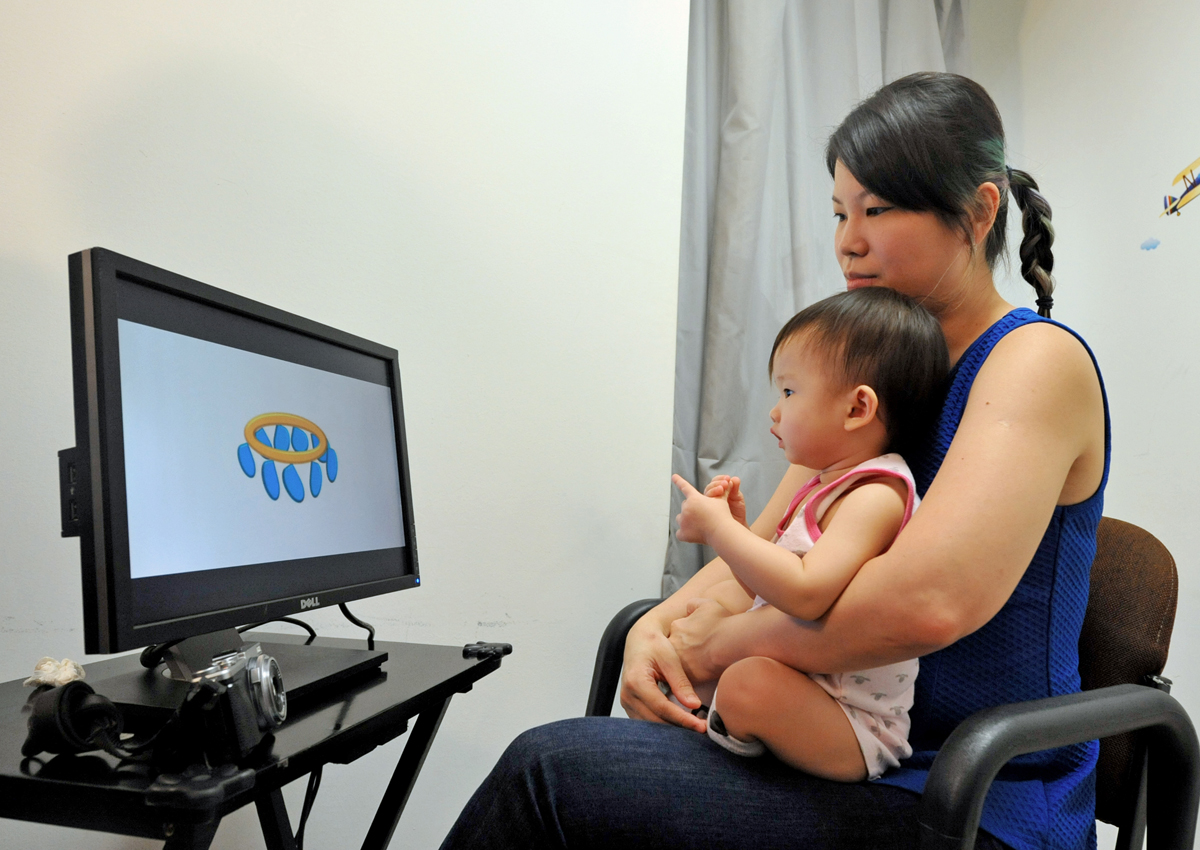Babies exposed to two languages at the same time can master the rules of each language faster than monolingual babies, a new study by National University of Singapore (NUS) psychologists has found.
They are able to differentiate between English and Chinese, and hearing both languages in their first year does not confuse them.
The study of 72 infants, which was completed last year, is believed to be the first in the world to show a bilingual advantage in language learning in infants up to two years old, said Associate Professor Leher Singh from NUS’ department of psychology, the study’s lead author.
Previous studies have focused on the language skills of older children or visual recognition and information processing skills of infants.
The study was conducted by Prof Singh, Ms Charlene Fu, a PhD student, and Ms Felicia Poh, a research assistant at NUS’ Infant and Child Language Centre. It was published in the global journal Frontiers In Psychology last month and its results were shared at a media briefing yesterday at NUS.
The researchers found that one-year-old infants who have been exposed to both English and Chinese are able to detect tone changes in Mandarin speech, using a method that tracks the time that they spent looking at an object on a computer screen while a word is read out to them.
At the same time, they ignored tone changes in English, showing that they can differentiate between the two languages and understand the different rules of each language.
“In Mandarin, when you change the tone of a word, it changes the word meaning,” said Prof Singh. There are four tones in Mandarin.
“In English, we have changes in the pitch of our voice but it doesn’t change the word meaning.”
The monolingual group in the study was made up of babies exposed to Mandarin and not those exposed solely to English, as the focus of the study is on tone changes, which are significant only in Mandarin.
Both groups of infants – monolingual and bilingual – were first taught a new word, “ba”, in Mandarin in the third tone, before being read the same syllable in two other tones.
The same process was carried out for English using the same syllable “ba”.
The bilingual babies spent twice the time looking at the word “ba” presented to them in the two different tones, compared with the first tone they were taught. On the other hand, they spent an almost equal amount of time looking at each varying tone of “ba” in English.
More fixation time reflects a surprised response when the tone changes, indicating a sensitivity to the differences, said Prof Singh.
In addition, they could also ignore tone differences in English, a language in which tone is irrelevant to word meaning.
In contrast, the babies exposed only to Mandarin were less sensitive to tone changes in Mandarin.
This group showed similar results in grasping tone differences in Mandarin speech as the one-year-old bilingual babies only at a later age, when they were 18 months old.
The study’s findings are reassuring for parents concerned that exposing their infants to two languages would confuse them, or delay development in one language, said Prof Singh.
The study found that bilingual babies have a six-month head start compared with their monolingual peers, and they can negotiate the rules of different languages successfully, she added.
Her team is recruiting more infants from six to 24 months old for research in related areas such as language perception and social development.
Secretary Tricia Wong, 34, wants her daughter Zelene, now 14 months old, to pick up both English and Mandarin in the future.
“At this age, their ability to learn is very fast… Getting them exposed to two languages this young is very beneficial,” she said.

This article was first published on May 17, 2016.
Get a copy of The Straits Times or go to straitstimes.com for more stories.






